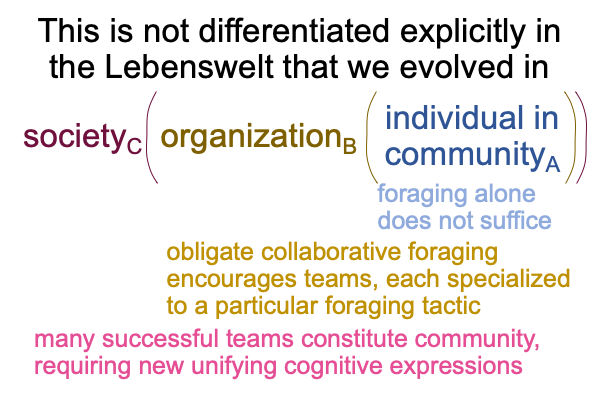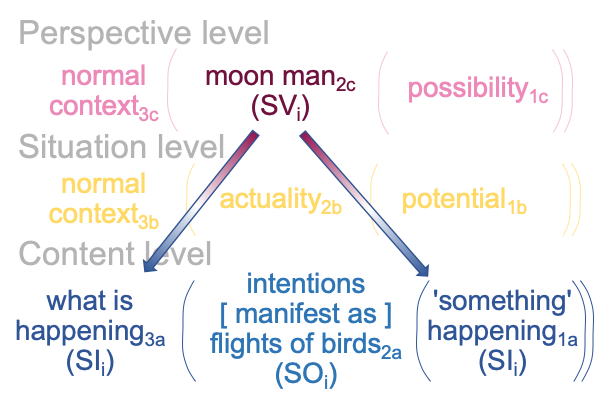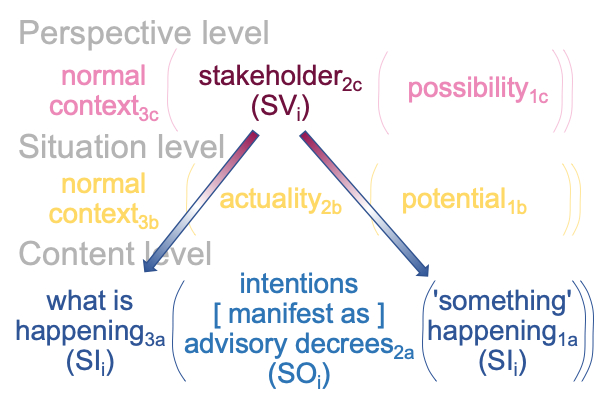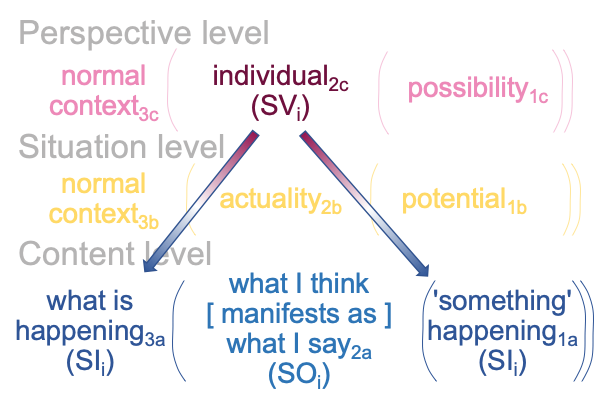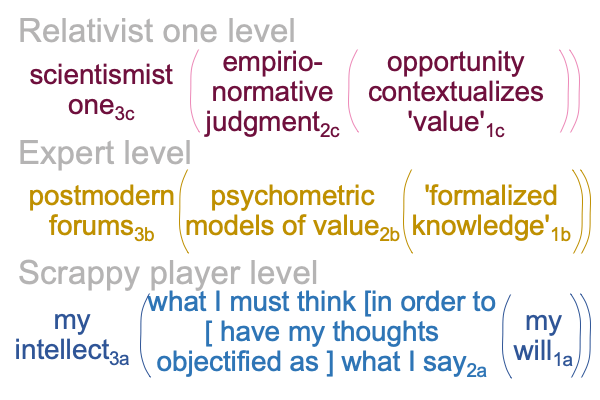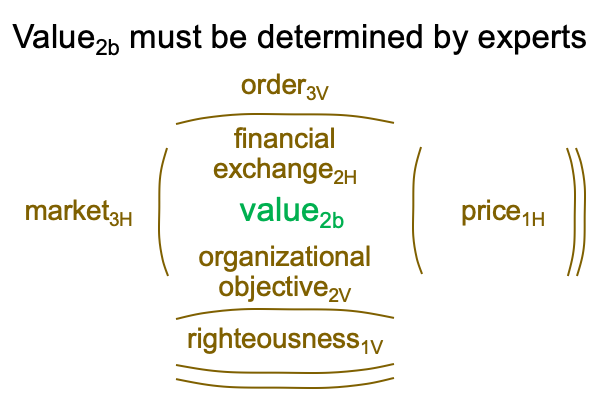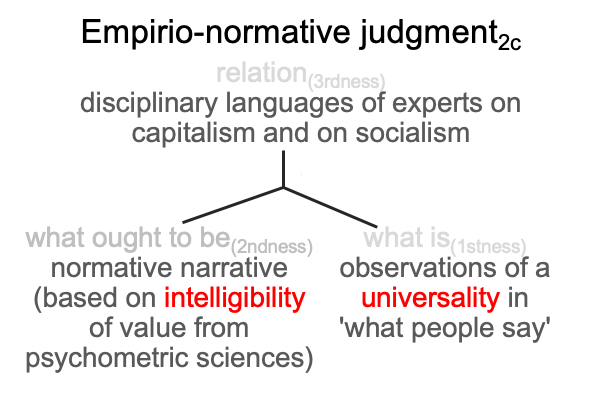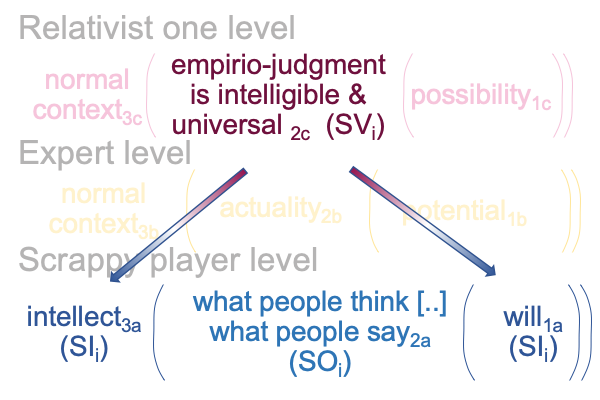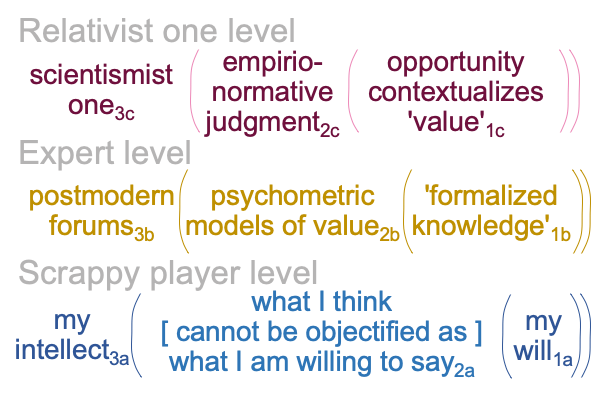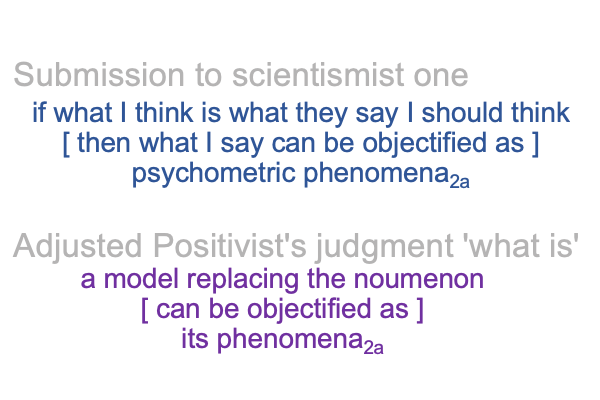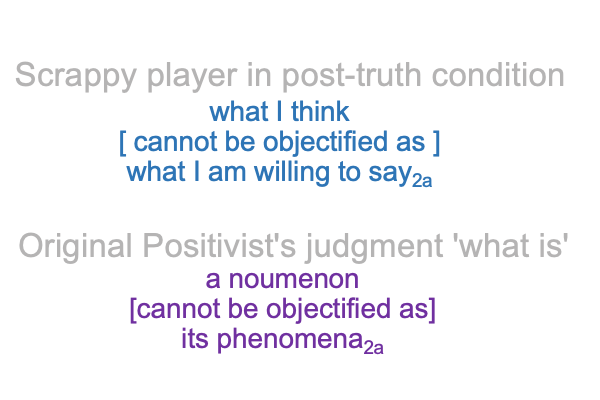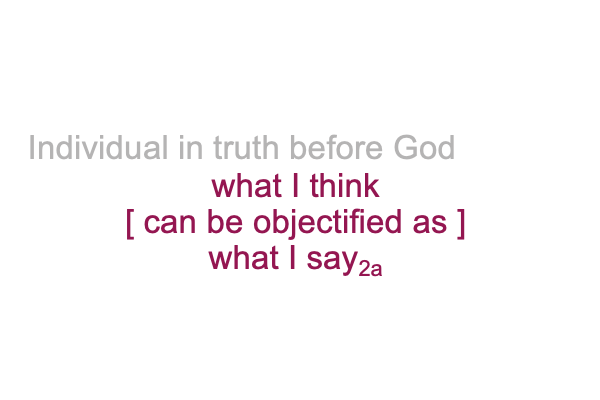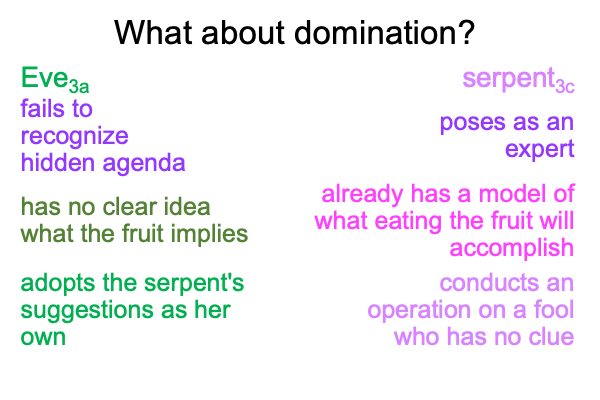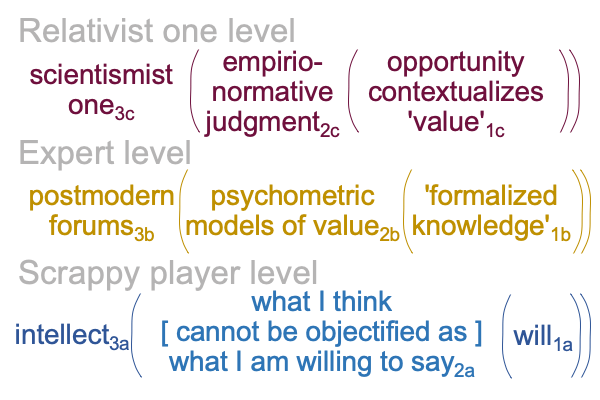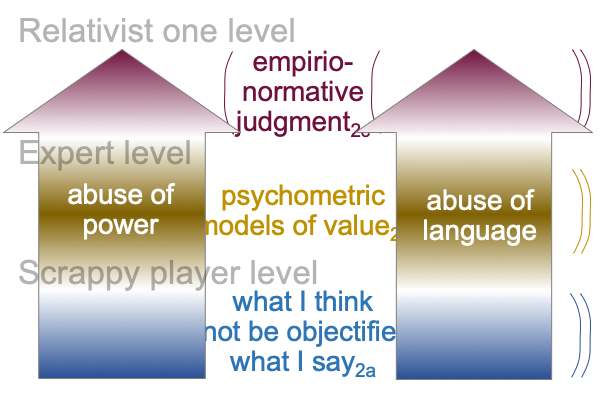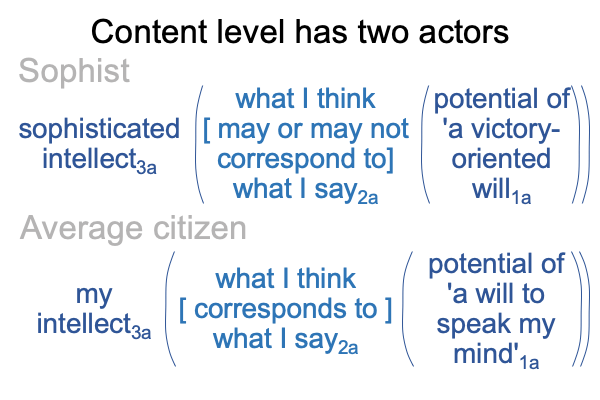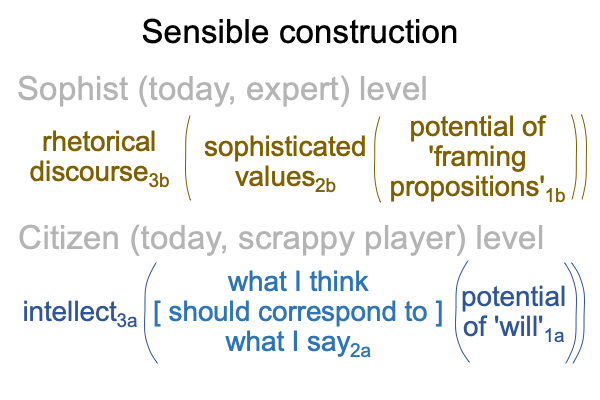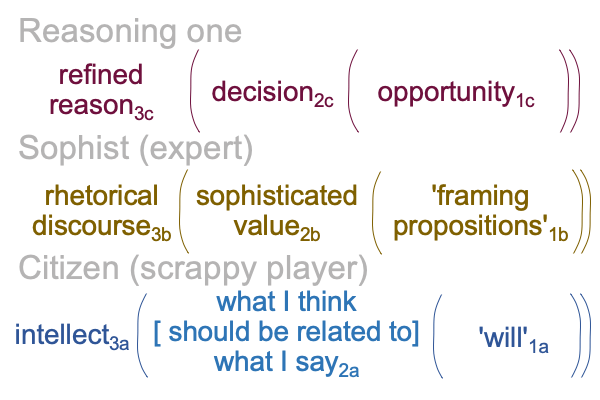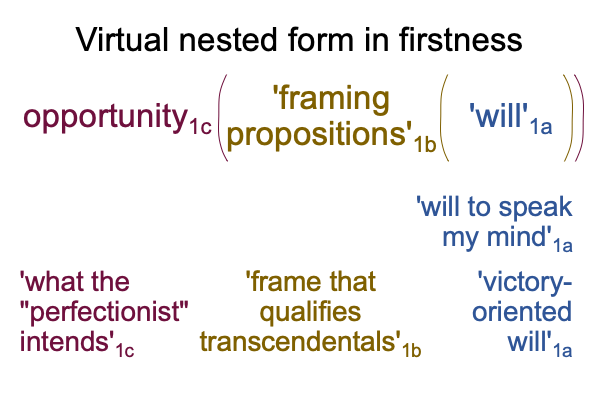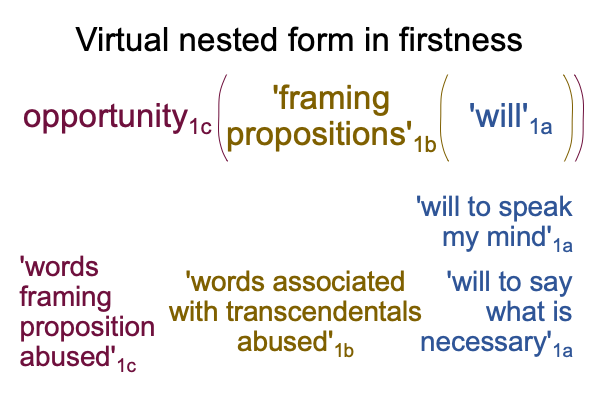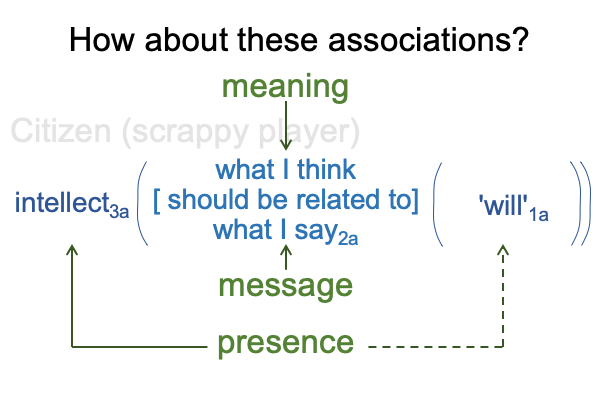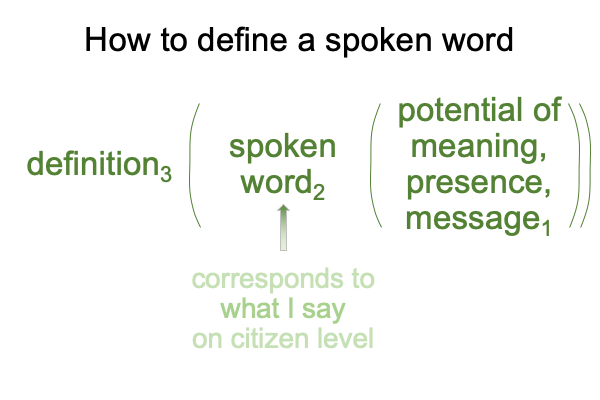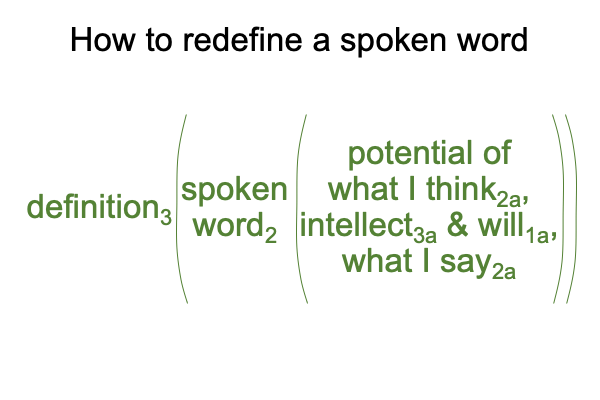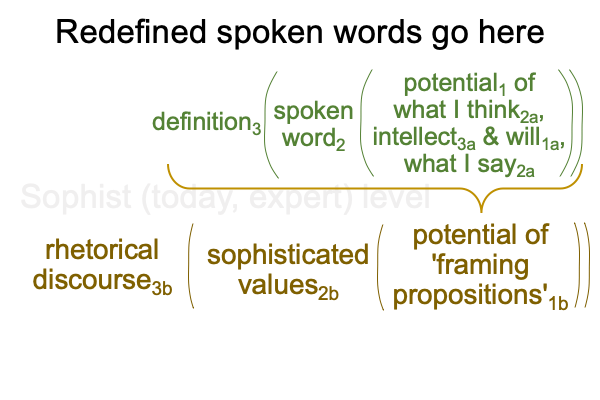Looking at Vivek Ramaswamy’s Book (2021) “Woke, Inc.” (Part 16 of 20)
0437 Does the managerial class know what it’s doing?
I wonder.
0438 The above interscope may explain why the managerial class rises in the first place.
It starts with education.
0439 The relativist one3c is above all jurisdictions. For education, that means all academic disciplines.
From what I already know, the perspective level of the post-truth interscope somehow fuses with the content-level of the society tier. This means that when someone enters an approved educational institution3b and earns a credential2bdocumenting their mastery of formalized knowledge1b, then some institution3aC within the umbrella of sovereign power3bC has provided an opportunity1c (which coincides with righteousness1aC) for success2c (which corresponds to an organizational objective2aC, beholden to capitalist and to socialist values2b).
0440 But, that is not enough.
The relativist one3c needs all academic disciplines to have something in common. This is where the style of science comes in. If the relevant academic disciplines have a common, scientific style, then the relativist one3c can relabel as the one of scientism3c. This allows psychometric academic disciplines to proliferate under the umbrella of the scientismist one3c.
Notably, academic fields such as humanism, the arts, theology, philosophy, rhetoric, history and so on, who have difficulties adopting an empirio-schematic denkstyle, have not flourished for the past fifty years.
0441 Overall, state education (1) offers organizational objectives2aC that demand sovereign power2bC in order to be implemented and (2) presents all psychometric sciences as officially “not religious”, because metaphysics is not allowed in the discourse of each discipline.
Education is key to the rise of the managerial class.
0442 So what really buried the Union of Soviet Socialist Republics?
Is it the fact that, for the capitalist USA, success2a for the scrappy player (getting ahead) correlates to success2c for the relativist one (an actionable judgment)?
0443 Once the USSR falls, an affirmative answer unravels as two opposing regimes of expertise begin to intermingle and the relativist one3c gives way to the scientismist one3c.
Here is a picture of education and the psychometric sciences that meld more and more objectively after the fall of the Berlin Wall, along with a picture of the increasingly crappy player level.
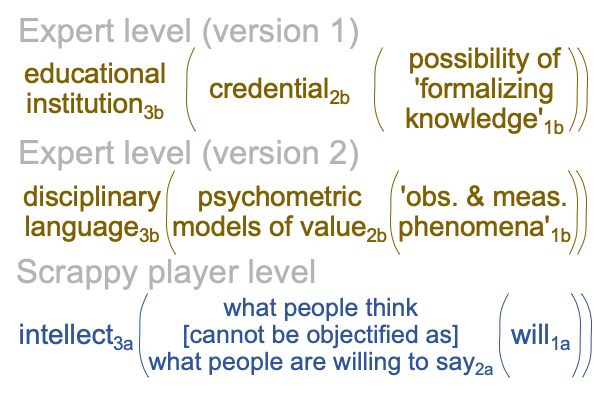
0444 Universities become multiversities.
Specialization abounds.
For example, the discipline of Anthropology differentiates into physical, archaeological, social, and cultural sub-disciplines. Each publishes its own journals.
Each is its own “science”.
0445 And, speaking of science, the psychometric sciences look at people as generators of social phenomena. Only a selection of what people are willing to say2a registers as phenomena2a that can be observed and measured1b.
0446 Why?
How does one observe and measure metaphysical beings and statements about metaphysical beings?
0447 Well, its a problem.
Only those statements1b useful for modeling2b register, because the empirio-schematic judgment corresponds to what ought to be, in the Positivist’s judgment.
Furthermore, the positivist intellect is the relation in the Positivist’s judgment and the positivist intellect has a rule saying, “No metaphysics.”
Here is a picture of the Positivist’s judgment.
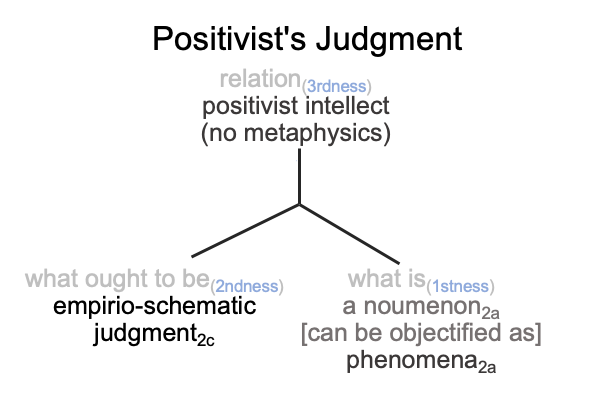
0448 Okay, what is for the Positivist’s judgment is a dyad. A noumenon [cannot be objectified as] its phenomena.
Does that look like the structure of the actuality2a on the scrappy player level?
Coincidence?
0449 Of course, Ramaswamy does not formulate the rise of the managerial class as a process where humans are turned into things that are subject matter for the psychometric sciences.
Instead, he proposes a policy option that would please someone like Betsy Devos, whose book is examined in Razie Mah’s blog for June 1 through 9, 2022. The title of the blog is Looking at Betsy Devos’s Book (2022) “Hostages No More”.
Here is how I diagram the content and situation levels of this sensible option.
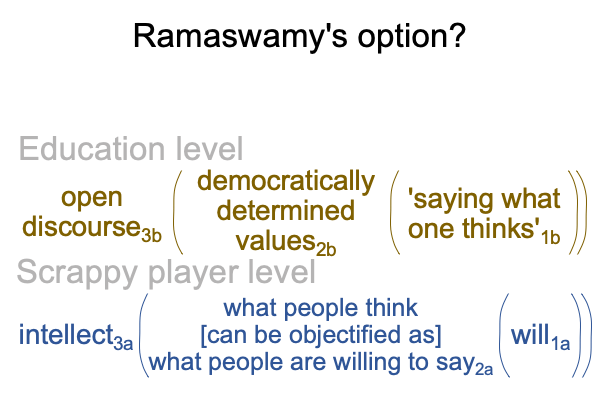
Otherwise, admit it.
No student is going to get a good grade if he don’t tell the teacher what the teacher wants him to say as if that is what he be thinking.

